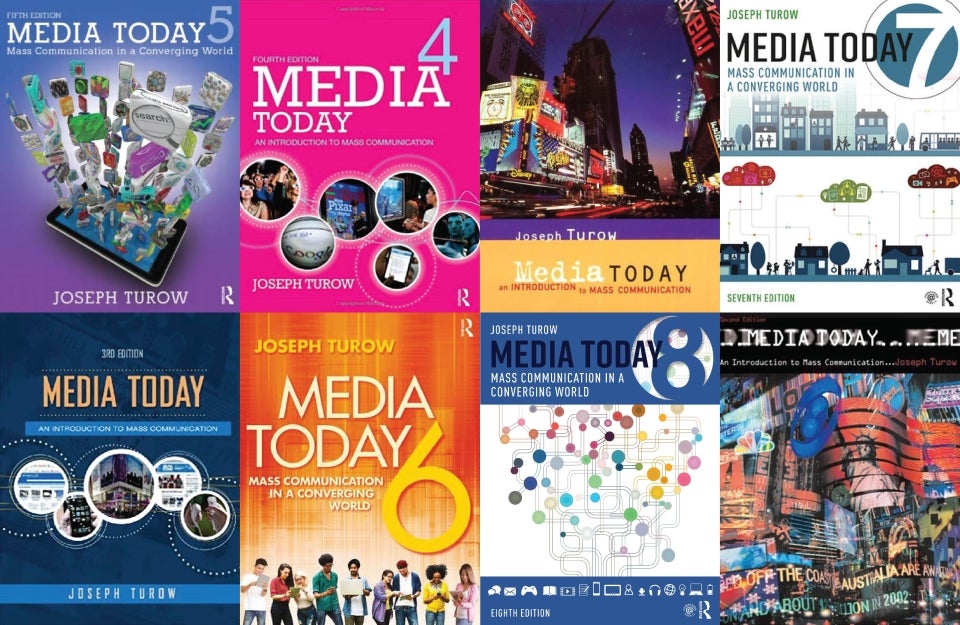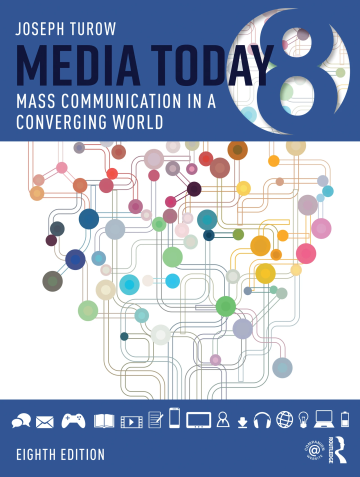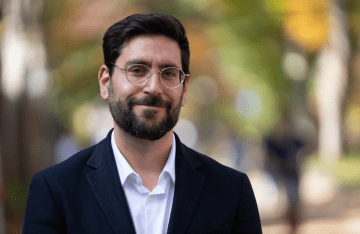With Media Today’s 8th Edition, Prof. Joseph Turow Charts Media’s Rapid Evolution
Published in September, the new edition of Turow’s classic textbook covers COVID, Spotify, and Netflix.

In 1999, when Professor Joseph Turow first published Media Today, a textbook that would become a cornerstone of communication classes across the country, only 42 percent of American households had a computer — and far fewer had access to the internet.
Today, by contrast, you can flip to chapter 10 of Media Today and read all about Spotify’s most-streamed songs or chapter 13 and learn about the Netflix reboot of Queer Eye.
“I teach COMM 1300 — Media Industries and Society — and I’ve been doing that for decades,” Turow says. “One of the ways I keep up with my students is by continuing to update this textbook.”

Media Today was originally published as Media Today: An Introduction to Mass Communication. The 8th edition, released this September and published by Routledge, is called Media Today: Mass Communication in a Converging World, a title Turow gave the textbook back in 2014.
The new title reflects the way in which the internet has not only transformed media industries, but also merged them together.
“If you work in the movie industry, and you think that all you do is make theatrical films, you're out of a job tomorrow,” Turow says. “The same is true with magazines, newspapers, and the book industry — everything is interrelated.”
Early versions of the textbook were organized chronologically: students would learn about the book industry, the movie industry, and finally, at the end, the internet.
“As time went on, I realized that you can't understand media industries as they are today without understanding the internet,” Turow says. “A lot of the book is about questioning how we critically understand the nature of the internet and the interaction of industries within contemporary society,” Turow says.

In the 8th edition of Media Today, the internet chapter is first.
A chapter that once solely focused on the radio industry now refers to it as the “audio industry,” reflecting that much of audio today is consumed via streaming, and may take other forms in the future. The television chapter is now the “television and video streaming” chapter. The video game chapter includes console games as well as mobile games and games in VR.
Every three years, Turow spends a year updating Media Today.
“Part of the problem with a textbook is by its very nature, the moment it comes out, it's out of date,” he says. By the time the text is finalized and the design is finished and ready to publish, something new has happened in the media world.
“As a textbook writer, you're hoping that the students and the instructors who use it understand that what they're getting out of this is not so much the particular data, but a framework for understanding changing media in the world.”
Turow was revising the textbook when COVID hit in 2019, fundamentally altering many media industries, especially the television and movie industries.
“Writing about the media in the middle of a pandemic was strange,” Turow says. “You have to think, ‘A year down the line when the book is published, what is the world going to look like?’”
He managed to cover COVID’s disruption of television and movie filming, its effect on the radio industry, video streaming numbers, and even Minecraft in Media Today 8, but is well aware that the next edition might need a lot of revising.
It’s not easy work updating a book you’ve been revising for over 20 years, but Turow enjoys it.
He can track the progression of mass communication through the textbook, as well as his own family. Media Today 5 was dedicated to his first grandchild, Oriana Avra. Turow now has seven grandchildren. The newest edition of the textbook is dedicated to them all.
"The textbook — and almost everything I write — is about storytelling in a way,” Turow says, “whether that’s advertisers telling stories about their audiences or producers telling stories to audiences in movies. Stories are our way of making sense of reality for society.”



